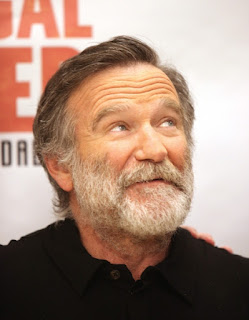Ever and ever, I have wanted to be part of an audience of happy theatergoers singing the bouncy and infectious Frank Loesser tune, “Once In Love With Amy.” Yesterday evening, it finally happened, and I couldn’t have been more pleased.
The sing-along, famously introduced by Ray Bolger during the original run of Where’s Charley? back in 1948, is the highlight of the sparkling production of this cotton candy of a show that just concluded its run at City Center. And what a treat it was!
Where’s Charley? is a piece of fluff, a farce based on the 1892 play Charley’s Aunt by Brandon Thomas. When Charley’s wealthy, widowed, and long-absent aunt plans a visit to her nephew, Charley (Rob McClure) and his pal Jack (Sebastian Arcelus) want her to chaperone a rendezvous they have planned with their respective sweethearts, Amy (Lauren Worsham) and Kitty (Jill Paice)—who, being respectable young ladies, would not otherwise join them. When the aunt postpones her trip, the only way to save the day is for Charley to pretend to be her. He dons a costume he has on hand for a theatrical production, and the rest is what you would expect it to be: lots of running around, complications, and the triumph of love.
Farce isn’t easy to pull off; indeed, the sillier the premise, the more difficult it is to carry the audience along. And Where’s Charley? is about as silly as they come.
Happily, the cast, under the direction of John Doyle, is perfection. They land every line with perfect comic timing, and they sing Loesser’s songs with such panache that every tune comes off as a polished gem, whether it be a straightforward love song like “Lovelier Than Ever,” winningly sung by veterans Howard McGillin and Rebecca Luker, or a comic number, like “The New Ashmolean Marching Society and Students’ Conservatory Band,” which serves no purpose whatsoever and which I would not excise for the world.
The Encores! Orchestra, under the baton of Rob Berman, is in glorious form, as is the choreography by Alex Sanchez, as are the singers and dancers of the chorus. Indeed, I would like to shower everyone associated with the Encores! production of Where's Charley? with rose petals.
But if I must single out one performer, it would be Rob McClure as Charley and as Charley’s alter ego, his aunt Donna Lucia D’Alvadorez who has lived for many years in Brazil…”where the nuts come from.” Mr. McClure’s performance is inspired. He may not be Ray Bolger, but he is Rob McClure, which is high praise indeed.
But if I must single out one performer, it would be Rob McClure as Charley and as Charley’s alter ego, his aunt Donna Lucia D’Alvadorez who has lived for many years in Brazil…”where the nuts come from.” Mr. McClure’s performance is inspired. He may not be Ray Bolger, but he is Rob McClure, which is high praise indeed.
I want to end this blog entry by taking a cue from Where's Charley? and inviting you to sing along with “Once In Love With Amy.” Direct your computer’s search engine to https://m.youtube.com/watch?v=mIL5J6H3soo, where you will find a clip of Ray Bolger singing his signature song, from the 1952 film version of Where’s Charley?. Enjoy!
Feel free to tell your friends about this blog, and to share your own theater stories by posting a comment.





